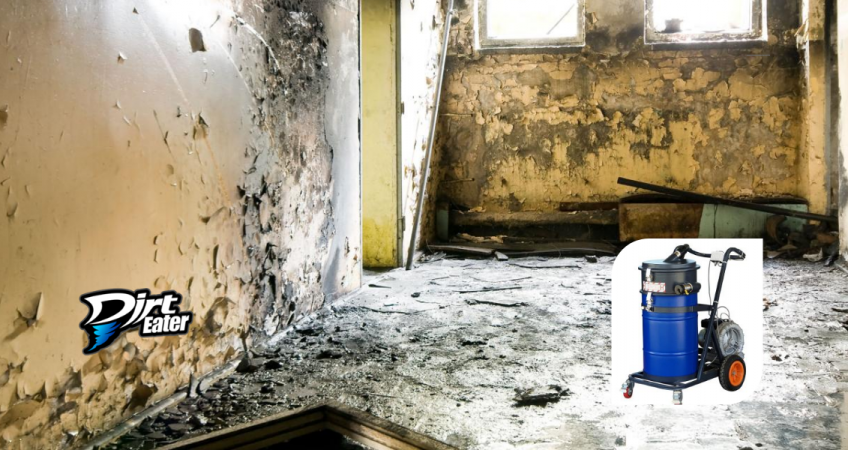Mold and your health: understanding the effects of Invisible Threats
It’s hard to imagine that something invisible to the naked eye can significantly impact your overall well-being. However, mold spores and building construction dust can trigger side effects, leading to serious health problems. In this article, we’ll review the connection between mold and your health, what symptoms to look out for, and what you can do to protect yourself.
The connection between mold and your health
The World Health Organization (WHO) has identified a strong link between mold and your health. That’s why it has published indoor air quality guidelines to help people reduce their exposure. Here are some of the most common ailments due to mold and dust:
Upper respiratory symptoms: the most common complaint
Allergic reactions are the most commonly reported result of breathing in mold spores and dust. These microscopic particles can irritate and inflame the mucous membranes in the sinuses, throat, and lungs, even in people who haven’t previously suffered from allergies.
If you’re chronically sneezing, coughing or wheezing, it could be a sign of a mold illness. More serious conditions include aspergillosis, which can be mild to severe, and hypersensitivity pneumonitis, which can lead to pulmonary fibrosis if left untreated.
Eye irritation: a common symptom
The delicate membranes of your eyes can also become irritated by mold and dust, causing redness, itching, and tearing. These symptoms may also be accompanied by headaches.
Digestive problems: a surprising result
While gastrointestinal problems are more likely to result from eating moldy foods, they can also result from ingesting mold spores and dust.
Complaints include diarrhea, nausea, and loss of appetite. Stomach discomfort often leads to weight loss, but surprisingly, weight gain can also be a symptom of mold and your health. According to mold expert Dr. Mark Hyman, director of the Cleveland Clinic Center for Functional Medicine, ingesting toxins can cause your immune system to produce antibodies that alter your metabolism.
Muscle pain and numbness: a puzzling symptom
After prolonged mold exposure, some people report muscle pain that cannot be explained by physical activity. Others have numbness or pins and needles-like tingling sensation that usually occurs when a foot or hand has “fallen asleep”
Read More: How to Clean Mold and Remove it from Your Home Using a HEPA Vacuum?
Depression: An indirect but real reaction
The connection between mold and your health isn’t limited to physical ailments. Depression and sadness are indirect but real reactions to mold and dust exposure. These conditions often arise when you feel like you have no control over your environment.
Other connections between mold and your health
Excessive thirst and urination, tremors and dizziness, and a metallic taste in your mouth are less common but possible symptoms of mold and dust exposure.
What you can do to protect yourself
If you notice any of these symptoms that never seem to go away completely, don’t assume you have to live with them. Talk to your healthcare provider, who can answer your questions about mold and your health and refer you to a specialist if necessary. Here are some other steps you can take to protect yourself:
- Reduce the humidity in your home, because mold thrives in a humid environment.
- Fix any leaks in your home, such as pipes and roofs, to prevent mold growth.
- Air out your home regularly, especially in rooms with high humidity such as bathrooms and kitchens.
- Clean and dry all water-damaged areas within 48 hours to prevent mold growth.
- Use an air purifier to reduce the number of mold spores and dust particles in the air.
Conclusion
Mold and dust exposure can lead to a number of health problems, from respiratory problems to depression.
FAQ
What happens if you inhale mold dust?
Breathing in mold dust can cause serious health problems, such as respiratory problems, allergic reactions and infections, especially in people with weakened immune systems. Using an industrial vacuum cleaner with a HEPA filter can effectively remove mold spores, improve air quality and maintain a healthy environment. For more information about industrial vacuum cleaners suitable for mold removal, please contact .
Call our technical team now for a consultation. Toll-free +61 1800 438 822 or Email Us On hello@industrialvacuums.net.au.
What happens if you inhale construction dust?
Regularly breathing in construction dust can lead to serious health issues, such as lung cancer, asthma, Chronic Obstructive Pulmonary Disease (COPD), and silicosis. Construction workers are at high risk for these diseases because many common tasks in construction create a lot of dust. Using industrial vacuum cleaners can help manage and reduce dust levels, improving air quality and protecting workers’ health. For more information on suitable industrial vacuum cleaners for construction dust removal, please contact

